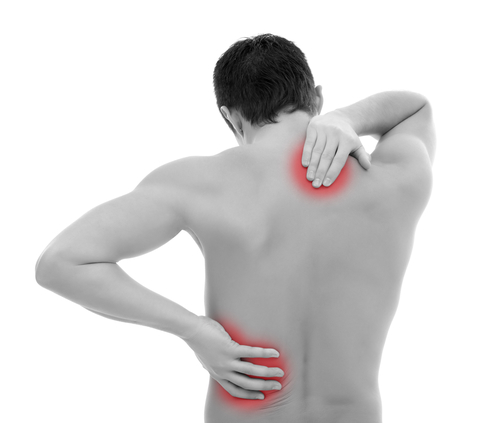Between all of the vertebrae that make up the human spine is a disc. They work as cushions or shock absorbers for vertebrae. We don’t use our discs consciously, but they’re an important part of our bodies. Without discs, the spine would be bone against bone, and it would be incredibly painful to even lay on a bed. Discs help us to bend, turn, walk or run.
Disc Composition
On the outside of each disc is a cartilaginous fiber called the annulus. It retains a jelly-like substance inside of a disc. That’s known as the nucleus pulposus. That’s what provides most of the cushioning effect for the spine. Given their characteristics, discs are often described as jelly doughnuts.
Bulging Disks
Our spines consist of three regions. The cervical spine is at the neck, the thoracic spine is at the trunk and the lumbar spine is at the bottom. Nearly all people who suffer from disc disorders have them at either the cervical or lumbar regions. A bulging (slipped) disc and a herniated disc are sometimes used interchangeably, but they are two separate and distinct conditions.
Surgical Bulging Disk
There are seven vertebrae in the cervical spine. They’re numbered C1-C7, and each one of them has a spinal nerve next to it. When the jelly-like substance of a cervical disc causes pressure on the inner wall of the annulus, it becomes stretched, but it doesn’t break. That’s what a bulging disc is. Think of a hamburger that isn’t perfectly round, and it’s too large for its bun. That part of the hamburger that sticks out from the bun is the bulge. As a result, it might put pressure on the spinal nerve root next to it. Symptoms typically consist of intermittent pain, numbness, tingling and weakness in the neck and arms down to the fingers. If you suffered a bulging cervical disc injury in Plano TX, you will be doing yourself a favor by seeing us.
Herniated Disc
When a disc is herniated, the cartilaginous annulus breaks, and when it breaks, the nucleus pulposus or jelly inside of the doughnut leaks out into the spinal canal. That typically puts pressure on the cervical spinal nerve root next to it. In severe cases, the spinal cord itself might be affected. Symptoms are likely to be more severe than those of a bulging disc. People suffering from a herniated cervical disc injury in Plano TX will also want to see us.
Only a trained professional can diagnose a bulging or herniated disc. Don’t delay the diagnosis, care and treatment of any suspected disc disorder.
Call 972-499-5457 to schedule a neck or back consultation with one of the best orthopedic spine surgeons, Dr Courtney.
Make an Appointment today!

